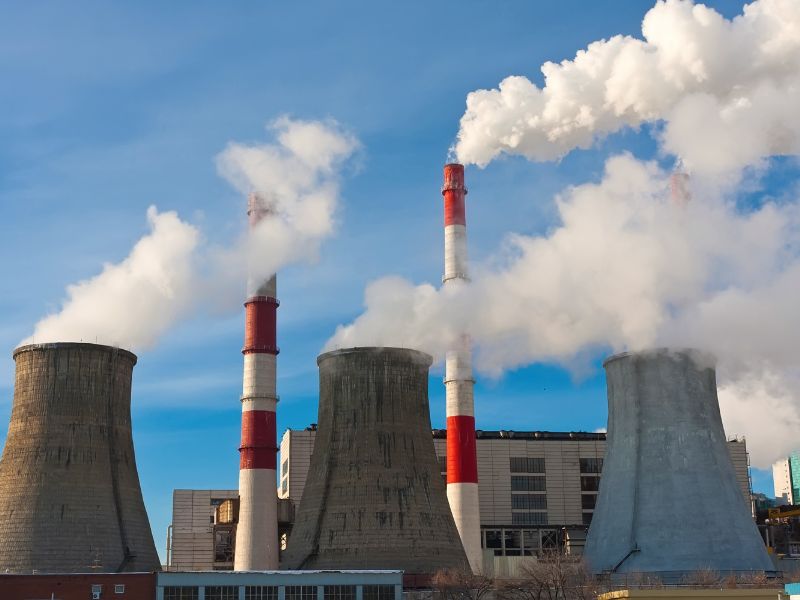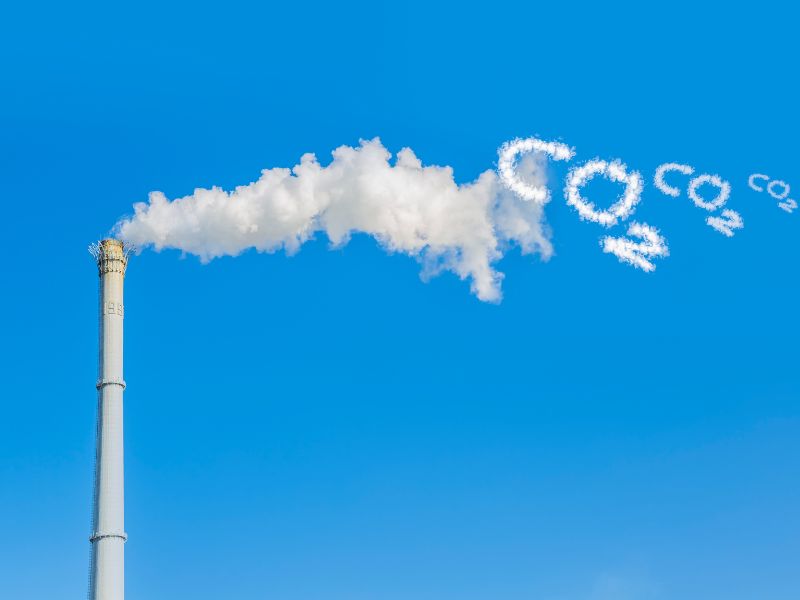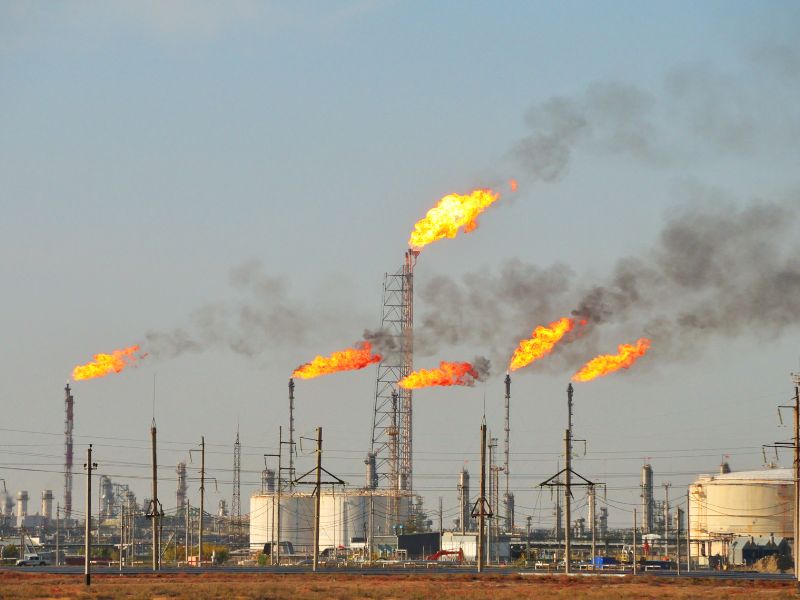In addition to wastewater and solid waste, emissions are also a significant contributor to environmental pollution. In daily life, numerous activities generate emissions. Here is some information about emissions and the common types that Reecotech would like to share with you.

1. What are Emissions?
Emissions are a mix of gases containing harmful components in gas or vapor form, produced by human activities such as industrial production, agriculture, transportation, and various other operations.
2. Common Types of Emissions
Each year, the global amount of emissions continues to rise, with various types emitted. The most common emissions include CO₂, SO₂, NOx, CH₄, and CFCs.
2.1. CO₂ (Carbon Dioxide)
CO₂ is a colorless, odorless gas, naturally produced through the respiration of living organisms and plant photosynthesis. However, most atmospheric CO₂ comes from human activities, especially the burning of fossil fuels (coal, oil, natural gas). Key sources of CO₂ emissions include:
- Industrial production: Such as cement, steel, plastic, and energy production, along with numerous consumer products.
- Transportation: Particularly from cars, motorcycles, and airplanes, making transportation the second-largest source of CO₂ emissions after industrial production.
- Deforestation: Forests absorb CO₂, but deforestation reduces this absorption capacity, increasing atmospheric CO₂ levels.
- Agriculture and livestock: Inefficient waste management in these sectors also contributes to CO₂ emissions.

2.2. NOx (Nitrogen Oxides)
NOx refers to a group of nitrogen oxide compounds, including NO (Nitric Oxide), NO₂ (Nitrogen Dioxide), and N₂O (Nitrous Oxide). These compounds are typically produced during high-temperature fuel combustion and can lead to air pollution and pose health risks. The main sources of NOx emissions include:
- Industrial production: Such as glass manufacturing, nitric acid production, and cement kilns.
- Transportation: Internal combustion engines in vehicles are a significant source of NOx emissions.
- Forest fires: This activity also releases large amounts of NOx into the atmosphere.

2.3. SO₂ (Sulfur Dioxide)
SO₂ is a colorless gas with a sharp odor, produced by the combustion of sulfur in fossil fuels like coal and oil. SO₂ can irritate the respiratory system and is a major contributor to acid rain. Key sources of SO₂ emissions include:
- Industrial production: Especially in cement manufacturing, metal smelting, and oil-based industries.
- Volcanic eruptions: Release natural SO₂ emissions into the atmosphere.
- Other activities: Such as cigarette smoking and forest burning.
2.4. CH₄ (Methane)
CH₄, or methane, is a colorless, odorless, flammable gas and a potent greenhouse gas, with a warming effect 25 times greater than CO₂ per unit mass. Methane emissions arise from:
- Livestock farming: Digestive processes in ruminant animals like cows, a primary emission source in agriculture.
- Anaerobic decomposition: Occurs in oxygen-free environments such as wetlands or sediment layers at the ocean floor.
- Burning fossil fuels and forest fires: These also contribute to CH₄ emissions.
2.5. CFC (Chlorofluorocarbon)
CFCs are gas compounds containing chlorine, fluorine, and carbon, synthetically produced for use in cooling products like refrigerators and air conditioners. CFCs are a primary cause of ozone layer depletion, which protects Earth from harmful UV radiation. These gases are highly volatile and easily disperse in the air, increasing environmental release risks.
3. The Harmful Effects of Emissions
According to the World Health Organization (WHO), air pollution is regarded as a “silent killer,” with an estimated over 7 million deaths annually due to its effects. Large particles can be seen or felt, but ultrafine particles (under 2.5 micrometers) are not detectable by the naked eye. These ultrafine particles can easily penetrate the respiratory system, leading to serious respiratory and cardiovascular diseases.
CFCs contain halogens such as chlorine and fluorine, considered highly hazardous. As volatile gases, CFCs readily escape into the environment, deplete the ozone layer, and contribute to the greenhouse effect. Environmental studies show that inhaling high concentrations of CFCs can cause symptoms similar to alcohol poisoning, such as headaches, dizziness, tremors, and seizures.
CO₂ absorbs and retains heat from sunlight, being a primary cause of the greenhouse effect and global warming. NOx, an extremely toxic gas, also weakens the ozone layer—the Earth’s protective barrier against harmful UV rays. Additionally, methane (CH₄) has a greenhouse effect 80 times stronger than CO₂ in the first 20 years, with a global warming potential 28 times higher than CO₂ over 100 years.
=> Reference: Gas chromatography systems used in continuous emission monitoring systems (CEMS).

4. Measures to Reduce Pollution from Emissions
Reducing carbon emissions is now a critical global goal, as these emissions have a profound impact on the environment, accelerating climate change and bringing numerous negative consequences. Some effective measures to mitigate emission pollution include:
- Prioritizing public transportation: Reducing personal vehicle use significantly lowers transportation emissions.
- Regular vehicle maintenance: Ensures optimal vehicle performance, reducing harmful emissions.
- Reusing and reducing single-use plastics: Minimizes plastic waste, which helps reduce emissions from production and disposal processes.
- Planting trees: Trees absorb CO₂ and release oxygen, contributing to cleaner air.
- Conserving resources: Reducing energy and water consumption helps decrease emissions from energy production.
- Switching from fossil fuels to renewable energy: Solar, wind, and hydropower are clean energy sources that greatly reduce emissions.
=> See also: Automated gas chromatography systems for analyzing natural gas, biogas, and LPG.
5. Emission Standards in Vietnam
In Vietnam, the government has implemented industrial emission standards under QCVN 19:2009/BTNMT. This regulation applies to individuals and organizations involved in industrial emissions, aiming to ensure that emissions do not severely impact air quality.
Emissions are a major environmental pollutant, significantly affecting human health, air quality, and ecosystem stability. From CO₂ causing the greenhouse effect to methane and NOx depleting the ozone layer, these emissions increase climate change risks and directly impact daily life. Reducing these negative impacts requires a collective effort from individuals, businesses, and governments to cut emissions, adopt green solutions, and comply with emission standards.

